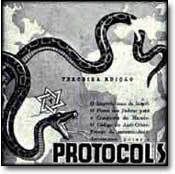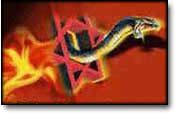This week marks the 65th anniversary of the nakba or ‘catastrophe’, the day that for Palestinians represents the loss of 78 percent of their historic homeland and the displacement of around two thirds of the population during the war of 1948. On 15 May, 65 years ago, the British mandate for Palestine was terminated and the state of Israel established.
All these years later, the part Britain has played in the history of the region is still keenly felt in occupied Palestine and is often traced back to the Balfour Declaration of 1917, which promised British support for a ‘national home for the Jewish people in Palestine’, before the British mandate even began. For many Palestinians, then, the anniversary of the nakba also serves as a stark reminder of Britain’s role in the denial of Palestinian rights, although it has little resonance here in the UK.
Since the war that followed the withdrawal of British troops in 1948 and the start of Israel’s military occupation of the West Bank and Gaza after the war in 1967, successive British administrations have made a series of statements of goodwill on the subject of Palestinian self-determination. Yet, despite the dispossession and displacement of many more Palestinians under Israel’s prolonged occupation, little action has been taken to ensure the rights of Palestinians are upheld in accordance with international law.
Last month, I accompanied four British members of parliament on a cross-party delegation to the West Bank to see firsthand what life is like for Palestinians living under occupation. They saw the impact the checkpoints, the separation wall, and the Israeli settlements and their related infrastructure, are having on the health and dignity of Palestinian communities.
During our stay we visited three Palestinian villages under threat of settlement expansion. Their experience gives a sharp insight into life under Israeli occupation and highlights the extent to which the nakba is an ongoing event.
Beit Safafa and Route 4
Beit Safafa is a Palestinian village in Jerusalem, located next to the Israeli settlement of Gilo. Gilo was constructed in 1971 on lands belonging to Beit Safafa and the neighbouring Palestinian village of Beit Jala. It is now one of the largest Israeli settlements in the West Bank.
In 1949, Beit Safafa was divided by the Armistice Line, which is now the Green Line between Israel and the occupied West Bank. Then after the war of 1967, Israel unilaterally annexed the southern two-thirds of the village, which had been under Jordanian control since the end of the ’48 war.
Today Beit Safafa is home to nearly 10,000 Palestinians – some are originally from the village, others re-settled there from Jaffa, Nazareth, Haifa and other cities inside what is now Israel.
The village is currently under threat from an extension to the Begin highway, which the Israeli authorities have approved, that will run straight through the village, splitting it in two. The road is part of a mission to consolidate ‘Greater Jerusalem’, and will link the large illegal Israeli settlement block of Gush Etzion with West Jerusalem, even though it is already serviced by fast settler bypass roads. We were told that once it has been completed settlers will be able to travel directly to Tel Aviv without stopping at a single traffic light.
The delegation visited Ala’, whose house lies within metres of the highway. He told us that plans for the road had been presented in 1990. However, the scale of the enterprise and the fact that the residents of Beit Safafa wouldn’t have access to the highway wasn’t made clear, so they did not object at the time. Now they have been told it is too late to object to the road currently under construction, on the grounds that they did not do so in 1990.
The road, which runs as two-lanes until it reaches Beit Safafa, will stretch to six lanes wide, separating residents from the mosque, bakeries, hospitals and schools that are part of their daily lives. In order to cross the multi-lane highway, they will have to use overpasses, underpasses or make long detours to get from one side of the village to the other.
In a wry act of resistance, Ala’ has set up a pulley system between his home and that of his cousin across the way. When construction is completed, he jokes, they will be able to pass a lemon across the multi-lane highway if they run out of supplies to make a salad.
Al Walajeh
Al Walajeh is another of the many Palestinian villages that have been drastically affected by Israeli policies and practices in the occupied West Bank. It is located 8.5 kilometres southwest of Jerusalem and four kilometres northwest of Bethlehem, next to the Israeli settlement of Har Gilo, which was established in 1972.
Like Beit Safafa, the village was split by the Armistice Line in 1949. Most of the village’s 1,600 residents were rendered refugees, with those owning property west of the Armistice Line unable to return to their land. The majority of the villagers left for other countries, but around 100 residents moved to the West Bank side of the line.
In 1967, after Israel’s occupation of the West Bank, a section of the village was designated part of Jerusalem. The borders of the new municipality ran straight through the village and as a result different laws applied to different parts of the village. Residents, however, remained unaware of the change in status until 1985, when bulldozers came to demolish homes that had been built without permits from the Jerusalem municipality. The land had been annexed to Jerusalem, but Jerusalem residency rights were not extended to the villagers. Caught in a catch-22 situation, they couldn’t apply for building permits without Jerusalem identity cards.
Since 1985, a further 50 homes have been demolished and the village is now almost completely surrounded by the separation wall. When the wall has been completed, the village will have a single entry point controlled by an Israeli checkpoint. Residents will only have access to their land through agricultural gates on specified dates for ploughing and the Israeli authorities are planning to declare 67% of their land a nature park.
All the land in Al Walajeh was registered during Ottoman rule or by Jordan. However, Jordan stopped the registration process just before the 1967 war, when the papers were still in process. As a result it is very difficult for the villagers to prove ownership.
During our visit we met with Omar, whose home will be on the ‘wrong’ side of the wall, separated from other residents of Al Walajeh. The Israeli authorities have built a private tunnel for Omar and his family to access the rest of the village. They are also planning to construct an electric fence around the house. ‘Al Walajeh has faced a lot of catastrophes,’ he says, ‘but we are facing the most difficult one now.’
The head of Al Walajeh’s village council told us that the wall is affecting all aspects of life in the village. Residents used to be able to access medical care at St John’s Hospital and Victoria Hospital in East Jerusalem, but this is no longer possible. There is no health centre and there is only one school in the village. ‘It feels like we’re living in a prison,’ he says, ‘I’m afraid children will be frustrated and lose their trust in the future.’
Wadi Fuqin
The Palestinian village of Wadi Fuqin has a population of around 1,200 people. It is located 9.4km south-west of Bethlehem, next to the separation wall, and is overlooked by the Israeli settlement of Beitar Illit.
The village is also bordered by the 1949 Armistice Line. It once claimed 12,000 dunams of land, but lost all except 3,000 dunams (about 750 acres) to Israel in 1948.
The Israeli settlement of Beitar Illit was established in 1985 on the land of three Palestinian villages, including Wadi Fuqin. It has since mushroomed into a large city with a population of over 35,000 settlers – primarily Haredi orthodox Jewish families.
Today, Wadi Fuqin is mainly dependent on agriculture for food and income. However, the village’s life-sustaining agricultural land is being damaged by the run off of raw sewage and construction debris from Beitar Illit. The sewage, which runs through specially-built pipelines that open on to the slopes leading to the village, accumulates on the Palestinian farmlands, poisoning crops, contaminating the water table and posing a serious health threat to villagers.
The villagers have complained several times through Palestinian co-ordination and aid agencies, but sewage continues to be dumped on their land.
Like many other Palestinian towns and villages in the West Bank, Beit Safafa, Al Walajeh and Wadi Fuqin have been exposed to continuous violations of international law. Their situation has been well documented over the years, and the injustices they face are quite simply breathtaking. Yet they are still waiting for international governments to take action.
‘Mr Balfour put us here,’ an elderly man said to the delegation of MPs as we were leaving Wadi Fuqin, ‘We want another promise.’
Aimee Shalan is Director of Advocacy and Communications at Medical Aid for Palestinians. She is also a freelance writer and has been a regular contributor to the Guardian Review. Her father was one of the 750,000 Palestinians who were forced to leave Palestine in 1948.
http://www.newleftproject.org/index.php/site/article_comments/mr_balfour_put_us_here._we_want_another_promise
Saturday, 18 May 2013
‘Mr Balfour Put Us Here. We Want Another Promise’
Posted @
17:15
![]()
Subscribe to:
Post Comments (Atom)
![[9_10_s22.jpg]](https://blogger.googleusercontent.com/img/b/R29vZ2xl/AVvXsEjTXnQay9wzz0E6nVHrVhaHKoq_zYXDqZjijHlNDQzj90MZzInrCuVX4ciFYCiBfZ7lhlgr2bBhhnl7ddWbhdih5JbXjQYbA605TNyiq046bQqjG2A4S-nHTmh1VBTQSG6tmc23wq47QQ/s1600/9_10_s22.jpg)




No comments:
Post a Comment